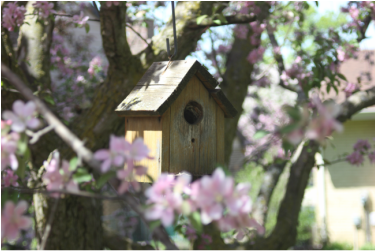 What does setting boundaries mean to you? Selfishness? Gigantic confrontations? Plates thrown across the room? Hurt feelings followed by the silent treatment for days? An opportunity to unload 30 years’ worth of baggage that you’ve been carrying? When I say the word “boundaries” to my clients, I often sense the fear response that is common for many people when they think of putting in place even the healthiest of boundaries. Yet, setting boundaries is a loving gesture that allows us to take care of ourselves through clear and gentle communication of what we’re willing to do or to allow around us. Boundaries that we set are kind for the other person, too. They make our intentions clear and help each person to be respectful and respected. Brené Brown, PhD, author and human behavior researcher, uses the acronym BIG to formulate her boundaries with others: “What Boundaries do I need so that I can stay in Integrity with myself and be as Generous as possible with you?” We can’t be generous with others—our time, resources, emotional energy, compassion—when we feel overburdened, taken advantage of, or drained. We instead start feeling resentful and build protective walls between ourselves and the other person. How do we set boundaries with loving kindness? We are in charge of ourselves: our time, our location, our finances, our sense of self and well-being. If any of those are being taken advantage of, it is up to us to protect the resource we feel is being drained. To do this, we define what we need or are willing to do, and determine the best way to communicate it, given the person with whom we’ll be communicating. Here are a couple of examples: Scenario #1: You have a friend in need whom you want to support, but he’s not taking any action to support himself. After several rounds of hearing the same story and offering the same suggestions, you are beginning to feel drained. Possible boundary: “I understand you are going through a hard time. You always have my support, and I know that you know what to do.” Repeat as needed. Note: I always encourage the use of voicemail as a boundary-setting tool. You can return the call at a time that is convenient to you; plus, you have time to prepare your boundary beforehand and have it ready when needed. Scenario #2: That obnoxious family member will be at the dinner gathering you are going to. She is always in everybody’s business and has something to say about it. Possible boundary: “Thank you for asking, Aunt Millie. Things are going well with me. What have you been up to lately?” (Notice the deflection and redirection. You only have to share what you want to, and with those you want to share it with. In this case, turning the focus back onto Aunt Mildred kindly redirects her attention, at least for a while. In either scenario, the other person wouldn’t necessarily know that we are setting a boundary with them. We are communicating the limit clearly, but less directly. We don’t have to wait until we are so exasperated with our friend, frozen in crisis, that we stop talking to him altogether, or end up saying something that is more hurtful than helpful. With Aunt Millie, we don’t have to tell her how obnoxious her behavior is— she probably already knows, and she might thrive on the negative exchange if we did tell her! In both cases, we simply set our boundary so as to not get entangled with the other person’s emotional state. Boundaries are kind, compassionate, loving ways to maintain our own integrity while respecting where the other person might be on their journey of self-awareness. What boundary are you going to put in to place today? 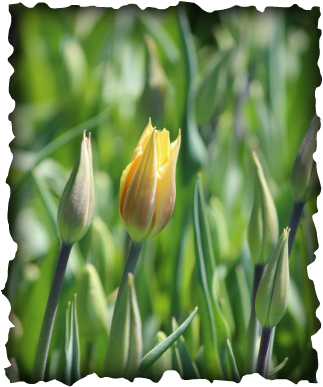 Sometimes it takes a lot to push through resentment to find the gratitude. I knew someone years ago who had purchased a condo to help a friend in need--a place for the friend to stay while she was trying to get back on her feet. All things were going well until the friend lost her job and stopped paying rent. Then one day, she disappeared to another state without explanation. How betrayed he felt! How could she do that? She left him with thousands of dollars in mortgage each month, plus his own home's mortgage! No word, no apology, no help! For several years, he tried to sell the condo. Sale after sale fell through for this reason or that. Every failed attempt to rid himself of the condo was one more reminder of the betrayal of his so-called friend, a reminder of how angry he felt at himself for trusting her, a reminder to forgive again. One New Year's Eve at a Burning Bowl Ceremony, he wrote a letter to himself stating that for the new year, the condo would be sold! The letter was mailed to him eleven months later, and eleven months later the condo still hadn't been sold. He had been sharing this story with me over time via email, and I could now hear the disappointment in his words. He had worked faithfully with the Seven Steps for Moving through Difficulties, a forgiveness process I had shared with him toward the beginning of this difficult, healing journey, and would return to it each time a condo sale would fall through. When he shared with me about his letter for the year, and his yet unmet commitment to continue to forgive, I could suddenly see the message loud and strong, and I replied: "You have worked hard this year to continue to free yourself from that condo, through all the sales that fell through, plus the forgiveness work that you have been persistent in affirming. Perhaps the condo is still part of your life, but you have freed your heart so much this year--and your free heart is something you get to take into the new year! Congratulations! "Sometimes we forget that the Universe uses our human circumstances to do a job that we might not have done otherwise. If the condo hadn't been a reminder of your friend's betrayal all this time, how would you have paid attention to that forgiveness need? It might have been buried in your heart like a needle in a haystack--only to poke you when you least expected it! "No wonder it's so important to look for the good in all things! It is always there. You have done a great job on fulfilling what you wrote in your letter last year! Now you're just waiting for the sale to go through. Give thanks for all things--mysterious and obvious alike!" As is true so often in my life and career, I can't give encouragement without seeing how it applies to myself. As I composed my email, I could see the many people and circumstances that have been so challenging in my own life this past year (and some for several years!). I could see how I hoped a struggle would be over, only to have it rear its ugly head over and over and over again. I could see my persistence, but also how it looked so disappointing because things didn't change according to my ideas or timing. Yet I could also see how the struggle is what strengthened me, slowly but surely! It loosened my grip on my desired results. It reminded me of the inner work left to do. It reminded me to forgive what needs to be forgiven, and that I wasn't finished quite yet. Outer results are easy to see, easy to be grateful for. But to see that there's something bigger going on? That takes looking beyond results. What in your life continues to show up and remind you to do your inner work? 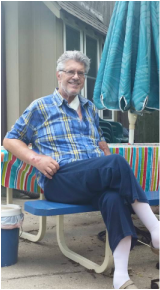 I spent two weeks in July helping my dad and mom after my dad had major surgery. I felt grateful enough for being able to be there for them, but the experience of his light and courage topped the experience! My only real job was to cooperate with the bigger picture. Before I arrived, I prepared myself for my dad to be incapacitated for the whole time I was there, with tubes coming out of him every which way. Indeed, he had a lot to overcome following his successful surgery! But by my second week there—two weeks after his surgery—he was home, walking around, looking and feeling better than he did before the procedure! My dad’s courage, will, and perseverance shined through him, even on his frustrating days. He took every day in stride, joked with the medical staff, and displayed a positive, stoic determination that wouldn’t have allowed any other outcome! My job was simple—stay above my own emotions. Fear had no place near him! Being human, of course I experienced it; but there was no space for that around him. Fortunately, I had already worked my release process—a couple of times before I arrived!—using the “Seven Steps for Moving through Difficulties” formula I talk about all the time. Doing that helped me be less attached to the outcome I wanted—for him to survive and be whole again, even minus an esophagus! But he is a soul in evolution, and this was his call to make, not mine! I had to get myself out of the way; I had to be prepared for any possible outcome. I released him to his highest good, knowing that whatever the outcome, that was the most efficient route for his soul journey. The most peace I felt was when I was simply in the moment with him, loving and appreciating his soul with no expectations or demands. There were ups and downs through the process: How much cancer was there? Did they get it all? (They did!) Irregular heartbeat. Infection. Difficulties eating, and so forth. Each time something new arose, I had to be steady and not lose myself in fear, sadness, or hopelessness. Each time I grabbed hold of a faith I didn’t know was there—not a faith in some god that would give me what I wanted. Rather, faith in his beautiful, wise Soul that knew what it was doing—no matter what! By the time I left, my dad was laughing, eating, walking and enjoying his newfound health! His healing process will continue for a while, but what a great start to that journey! Where else in my life can I trust the bigger picture rather than my own puny ideas of what should or should not take place? Where in your life can you trust the bigger picture? It is always there! Trust it. Look for it. Let go of your ideas of outcomes and embrace the plan that is in place for the highest good for all concerned. Cooperate with the process!  There is always a solution. One of my primary jobs as a therapist and spiritual counselor is to be that objective person who can see what I call the “third option”. What is the third option? The third option is that other possibility for moving through a tough situation. Perhaps there are several “third options”, but when we are feeling stuck, we tend to see our situation in rigid, black or white terms. For example, someone who feels stuck in his or her career may only be able to see two limiting options: “Stay here and suffer, but at least I’m getting paid,” or, “Quit my job and be unemployed because the economy is so bad.” This is a good time to look for those third options! Why is the third option so hard to see? In the above example, you may be able to quickly see that there are certainly other possibilities than those mentioned. But, when we are in the middle of our own stuck place, it can be hard to see third options! Our own circumstances trigger our emotions, which keep us from being able to see other possibilities. Can you guess which emotion is most prominent in our example above? You are correct if you guessed fear. Fear is one of the biggest blind spots we have as human beings. It keeps us from seeing beyond the two walls that feel like they are caving in on us! Fortunately, our fears are seldom accurate; so having an objective viewpoint can help us see other choices that are there, closer than we may perceive. A close second to fear in why we’re sometimes not able to see the third option is that often they are wrapped up in things we may not want to do—and those might just be the action steps that would support us the most! Let’s face it: Our problems are here to stretch us, and stretching pulls us beyond our current state of flexibility…and comfort. That means that 99.9% of the time, we will have to do something we’d rather not. The plus side is that it often feels great to do just that! How can we learn to open ourselves to the third option? When we find ourselves feeling stuck, the first thing we must do is to recognize the potential (and need!) for growth. This will help relieve the worry and fear, and allow us to take a step back from the situation and see the bigger picture. Next, brainstorm possible solutions. Remember how we learned to brainstorm in elementary school? Everything goes! Write down all those potential solutions, even and especially the silly ones! Have fun trying to think of ways to resolve the situation. Make sure that list includes those options that you think you would never do. You might just come up with something you would do after all! Try asking yourself these questions:
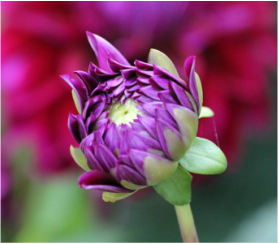 Ahhh, the New Year is upon us, and all the new light and hope it brings! Do you feel uplifted and refreshed at this time of year? If so, it is because there is Divine energy that pours onto us every year! It gives us that push to better ourselves each new year, and is why so many of us create resolutions. My motto about New Year’s resolutions has always been: Keep It Simple; Keep It Spiritual. Keep It Simple: Ask yourself the following questions for each resolution you want to make. 1. What is my goal? (Keep it simple, realistic and attainable.) 2. What would keep me from achieving this goal? 3. What do I have to give up in order to make this goal happen? 4. What do I have to begin doing in order to make this goal happen? 5. What would support me in achieving this goal? 6. How can I break this goal down into manageable steps? 7. What is a good first step toward this goal? This process will help you narrow down your list before it becomes overwhelming and ultimately unachievable. Keep It Spiritual: Every year brings ample opportunities for each of us to courageously grow, change, love, forgive, help, and to be kind and generous. Why not commit to an open heart, or listening more to your intuition? With a resolution like that, everything else will follow! For 2015, keep it simple and spiritual: Commit to yourself, to your conscious awakening—which includes a greater awareness of not only your true self, but of those around you who need more (or something different) from you! Happy New Year!  As a child, when I wasn't making smart choices, my mom would say to me, "Lynn, use your God Mind!" My God Mind? What is that? It took me a while to realize that this is my inherent Divine Intelligence. Wow! I have the ability to think things through, to discern what is right from wrong, to handle myself with wisdom--no excuses! You've probably heard people say, "I'm waiting for God to tell me what to do", then sit around without doing a single thing to support themselves. At these times, my college roommate and dear friend used to quote her mother's favorite motto: "The Lord helps those who help themselves!" That was her mom's way of saying, "Use your God Mind!" Of course there are times when we wait, when it's not time to take action. But it is important to discern between waiting for the appropriate time to act and being afraid to act. The difference is that when we are waiting for right timing, we feel calm and trust the flow. Fear of acting, on the other hand, can stem from feeling anxious about an outcome, stepping outside of our comfort zone, or not wanting to change. Once I was traveling by airplane alone with my young daughter. I was used to relying on my travel-adept husband to guide the way, but not this time. On this occasion, the first leg of our trip brought us to the airport an hour late, and my daughter and I needed to catch the second leg of our flight in less than 20 minutes--on the other side of the airport! During our necessary stop to the restroom, I felt paralyzed. What are we going to do? This is bad! Now we'll be stuck here! This stinkin' thinkin' was interrupted by a strong inner voice telling me, "Use your God Mind!" I stopped and realized that I could either sit here in fear with my child, or...make a run for it! So we ran! And we made our next flight, and somehow our luggage did, too! Practicing using our God Mind reminds me of St. Francis' Prayer for Peace that begins, "Make me an instrument of Your Peace." St. Francis is asking to be a channel for divine qualities of hope, light, love, and joy. Why not also ask to be a channel for Divine Wisdom? While we are waiting for God to tell us what to do, God may be waiting for us to use our "God Mind", to take intelligent action, to do what is in front of us to do! Here's a prayer (if I may be so bold) to help awaken that God Mind in you: Make me an instrument of Your Mind. Where there is doubt, let me have faith. When I feel fear, don't let me stay stuck! Where there are questions, I will seek answers! When I want to hide because circumstances feel too hard or too scary, Remind me that You are in me, Along with Your eyes, wisdom, and solutions. Help me trust my own Divine Self, That I may never feel lost, nor stagnant, nor abandoned. I acknowledge and awaken to Infinite Wisdom, Infinite Love, Infinite Will, Guiding my open and listening heart. Try this (or any other method of quieting your mind) when you feel stuck or afraid, and see how getting still and opening to your inherent Infinite Wisdom--your God Mind--can support your next right action!  Journaling is a tool that is always on hand! Process journaling is a tool I often use—and support my clients in using—even though most of us (myself included!) don’t like taking the time to do it. And it does take time and effort! But so does brushing our teeth every day, but we (hopefully) find time to do that twice a day. Just as brushing teeth is an important part of our physical hygiene, journaling as part of our emotional, mental and spiritual hygiene just makes sense. Journaling’s benefits include helping you to get out of your head (versus letting thoughts spin around in the hamster wheel of your mind); allowing you to better focus on the facts of a situation, versus the emotional content and potential projections by you or another; and helping you attune to your own intuition by letting out the clutter and listening for what remains. Unless you’re excited about writing a little every day (and a rare one you are, if that’s true for you!), when is it a good time to journal? Besides “anytime” as the best answer, other times include when you: • Have a question about what to do • Have been triggered by a person or situation • Had a dream that stood out to you • Need help prioritizing your day • Need to forgive • Wand to understand a character trait/pattern in yourself • Want to understand a character trait/pattern in someone else that drives you crazy (why?) • Your mind is racing and you don’t know what to do Building writing time into your schedule, making it a priority in your life, is a must for serious spiritual seekers wanting to learn more about who they are. Here are some tips for setting up a writing practice: 1. Have two journals: One for processing with pages you can tear out and burn, shred, recycle; one for recording your insight, understandings, intuitions. 2. Ask a question about the subject, and write your answer. For example:* a. What emotions am I feeling? b. Who or what pushed my buttons? Who was upsetting me today? c. Does this always happen to me? Is this a pattern in my life? d. When has this happened to me before? e. If I was guided by my soul, rather than being run by my ego, how would I handle things differently? 3. Did you receive your answer? You may not right away. Set aside your journal for now. Resume tomorrow. Whether you prefer using a phone app, keyboard, or good, old-fashioned pen and paper, writing down your insights each day is guaranteed to support your awakening. Taking time to write will help you assimilate new understandings, support the changes you want to make, and help you remove blocks to reaching your spiritual goals. *Questions partially modified from Jane Elizabeth Hart’s amazing little book,Spiritual Power Tools: Support for Your Soul, © 2004, 2009. Now that you are excited about the benefits you will receive from an ongoing meditation practice, the next step is to begin making part of your daily routine. Here’s step-by-step support for your budding meditation practice:
1. Make a commitment to yourself. Five minutes a day? Ten? Thirty? One hour? Commit to a meditation practice, no matter what daily quantity, for three months; then decide if you like it or not. 2. Choose your meditation space. Make it nurturing, comfortable, simple, relaxing, and peaceful. Use this same space each time you meditate. 3. Choose your meditation time. Meditating at the same time every day builds an automatic response into your mind and body. Your whole self begins to cooperate when you sit down for your time! 4. Find a spiritual symbol that resonates with you. Why? A symbol that is steeped in tradition or meaning for you will magnetize your innate spirituality. 5. Find a methodology that works best for you. Try a few of these to find out your own meditation style preference: a. Perhaps a guided meditation would help keep you focused. There are CDs, mp3 recordings, YouTube videos, and even smartphone aps with all sorts of guided meditations. Find two or three that you like so you can use them interchangeably. b. Centering prayer is a wonderful tool for a busy mind! Take a prayer that resonates with you, and recite it slowly to help you quiet your mind. Repeat slowly and sincerely throughout your time. c. Mindfulness is the practice of observing your thoughts, feelings, body sensations, and breath, with detachment, non-judgment, and compassion. Being present with what is, without having a conversation about it in your head, is an excellent and very portable meditation practice. d. Visualization is a method often found in guided meditations, but you can create your own. Imagine yourself spreading out of your body, filling the room you are in, then stretching through your whole house, then neighborhood, then city, then state, then country, then throughout the entire planet, then universe! Sit in that expanded state without inner comment. e. Group meditation is a great way to keep your commitment to yourself. Although it may not be feasible to meditate with a group every day, once a week—or even once or twice a month—has great value. You receive a vibration boost from others when everyone is generating energy for the common purpose of meditation. 6. Keep a journal. Meditation is going to awaken you to new ideas, experiences, and insights. Writing them down helps assimilate those new understandings into your consciousness. 7. Practice every day, no matter what! Some days, your meditation will feel extraordinary, or maybe it won’t. Either way, trust that something is happening, even if you aren’t consciously aware of it. Go back and remind yourself of the benefits of your practice. Let it be okay that you don’t feel enlightened at the end of your first month. Meditation is like brushing your teeth—you just gotta keep doing it for the best results! Now give it a try! You will be grateful that you gave yourself this gift of a meditative life!  Meditation, meditation, meditation. It’s everywhere. Everyone is talking about it. You’ve heard them say how wonderful it is. You want to give it a try, but it seems a little mysterious and “out there” to you; and you don’t know where to begin, or why you even should. Let’s start with what it is. Meditation could be defined as a process: At first, it is the act of focused attention on a single subject. Eventually (and I do mean eventually), it is merging with the Infinite. You only need to be concerned with the first part, which is the discipline itself. Before you jump into the discipline, it is important to know why you are doing it. What are the benefits of meditation? Surely they are innumerable, and outcomes can be different for you than your friend who meditates. You are a unique soul that will receive unique benefits from your practice! There are, however, a few given benefits from a consistent meditation practice:
Does it sound worth it now? Excellent! Next month I’ll walk you through some steps and methods to support your meditation practice. In the meantime, explore some times of day that would work best for your meditation practice. Look into a space in your home that would serve as a spiritual refuge for you. Get ready to commit to your soul!  Lately there has been much talk about how busy a society we are, the evils of technology, and what a shame it is that we connect online more than in person. Yet there is another practice that is emerging simultaneously with our busyness: Realizing the importance of taking time away from it all! Meditation, yoga, sitting by the beach, and other forms of quiet time are finding their way into many people’s routine. Sometimes clients share their involved story with me, then say, “I just don’t feel I am handling it well.” In most cases, they are handling the situation beautifully, but forgetting to handle themselves as conscientiously as they are the other people and events. I will gently reflect that perhaps instead of needing to do more, it is time to do less, to take time apart from the situation and renew themselves. What are some ways you renew yourself? Having a list of three or four things can help your renewal time feel fresh. Other people like their standby of one or two activities (or inactivities!). Taking a walk, listening to music, relaxing in a hammock, reading a book are other ways to take a vacation from busyness for a while. I love riding my bike around a lake near our house. Biking has always been a refreshing activity for me—feeling the wind cooling me as I ride, looking at natural surroundings or pretty neighborhoods, and enjoying the exercise-induced invigoration when I’m done. My favorite trail is in Busse Woods, passing the elk as I ride; but even shorter rides near home can feel like I was gone for hours! If these activities still seem too time-consuming in your busy day, try taking two minutes two or three times throughout your day to breathe. Stop what you are doing and do some diaphragmatic breathing—breathing from your belly—in and out for two minutes. Try it right now…Refreshing, right? There is always time to take time apart--and there is always the need to do so! |
Archives
April 2016
AuthorLynn Barrette, LCSW Blending psychology with spirituality, I offer tools for forgiveness, acceptance, meditation and relaxation, and positive parenting solutions. Categories
All
Archives
April 2016
|
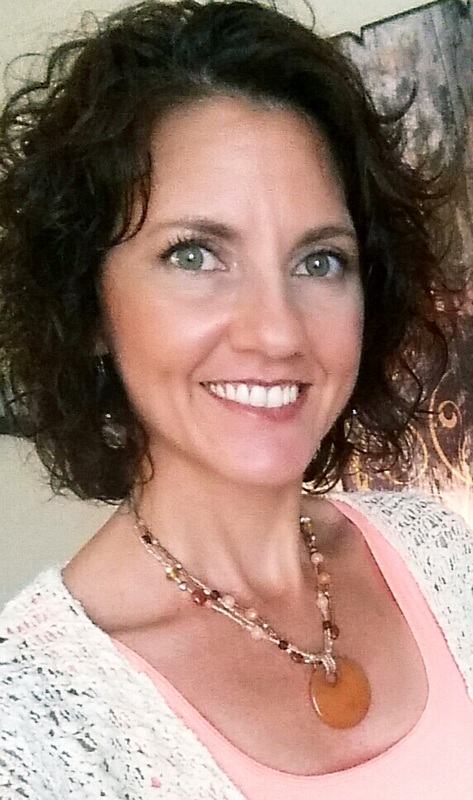

 RSS Feed
RSS Feed